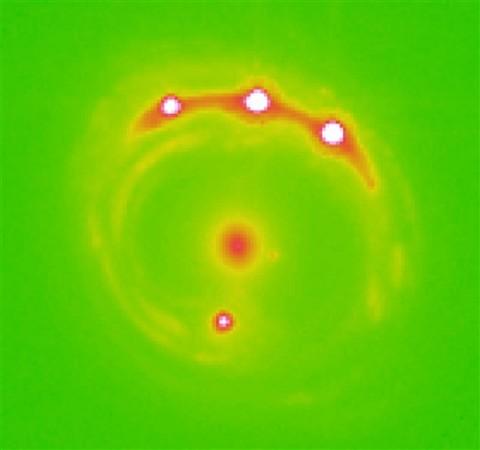![[Representational image] nasa, Multiple planet system,](https://data1.ibtimes.co.in/en/full/679057/nasa-multiple-planet-system.jpg?h=450&l=50&t=40)
Astrophysicists have discovered thousands of planets in a galaxy outside our Milky Way galaxy. This is the first time that planets are being located in other galaxies.
The planets are varied in size; some as small as the Moon while some as big as Jupiter.
ALSO READ: Earth's magnetic field is likely to flip and cause severe disaster, scientists warn
Around 2,000 unbound planets were found amid the stars of the faraway galaxy situated 3.8 billion light-years. So far, there has been no evidence of planets in other galaxies, according to Science Alert.
This discovery was made by the researchers at the University of Oklahoma using the technique known as gravitational microlensing as well as information from NASA's Chandra X-ray Observatory.
ALSO READ: Amateur astronomer finds NASA satellite IMAGE 12 years after it goes missing
It's a hard task to find exoplanets within our own Milky Way galaxy but with the microlensing technique, which was first predicted by Einstein's theory of general relativity helped in finding these exoplanets.

ALSO READ: Burj Khalifa-sized 'potentially hazardous' asteroid to pass by Earth next month: Top things to know
So far, microlensing is the only way used to detect the tiniest and distant planets which are situated around thousands of light-years away from Earth.
"As a planet orbits a star, the gravitational field of the system can bend the light of a distant star behind it," Science Alert reported.
It's known what it looks like when just two stars are there, but when a planet enters the cluster, it creates further disturbance in the light which reaches us which help in spotting the exoplanets.
ALSO READ: Watermelon snow spotted in Montana's Grinnell Glacier
Till now, 53 exoplanets have been discovered in the Milky Way using this technique. A more powerful technique was required to find planets located at a more distant region from our galaxy.
Astronomers Xinyu Dai and Eduardo Guerras from the Oklahoma University analyzed a quasar six billion light-years away dubbed as RX J1131-123, which is known as one of the best quasars present in the sky.
"The gravitational field of a galaxy 3.8 billion light-years away between us and the quasar bends light in such a way that it creates four images of the quasar, which is an active supermassive black hole that's extremely bright in X-ray, thanks to the intense heat of its accretion disc," a report in the Science Alert said.
Unusual lines of energy shift in quasar's light were found by the researchers, which could only be explained by the planets in the galaxy lensing the quasar.
"We are very excited about this discovery," Dai said in a statement.
"This is the first time anyone has discovered planets outside our galaxy," he added.
ALSO READ: Mysterious crater leaves residents baffled in French resort town [Video]
"This is an example of how powerful the techniques of analysis of extragalactic microlensing can be. This galaxy is located 3.8 billion light-years away, and there is not the slightest chance of observing these planets directly, not even with the best telescope one can imagine in a science fiction scenario," Guerras said in a statement.
"However, we are able to study them, unveil their presence and even have an idea of their masses. This is very cool science," he added.

















